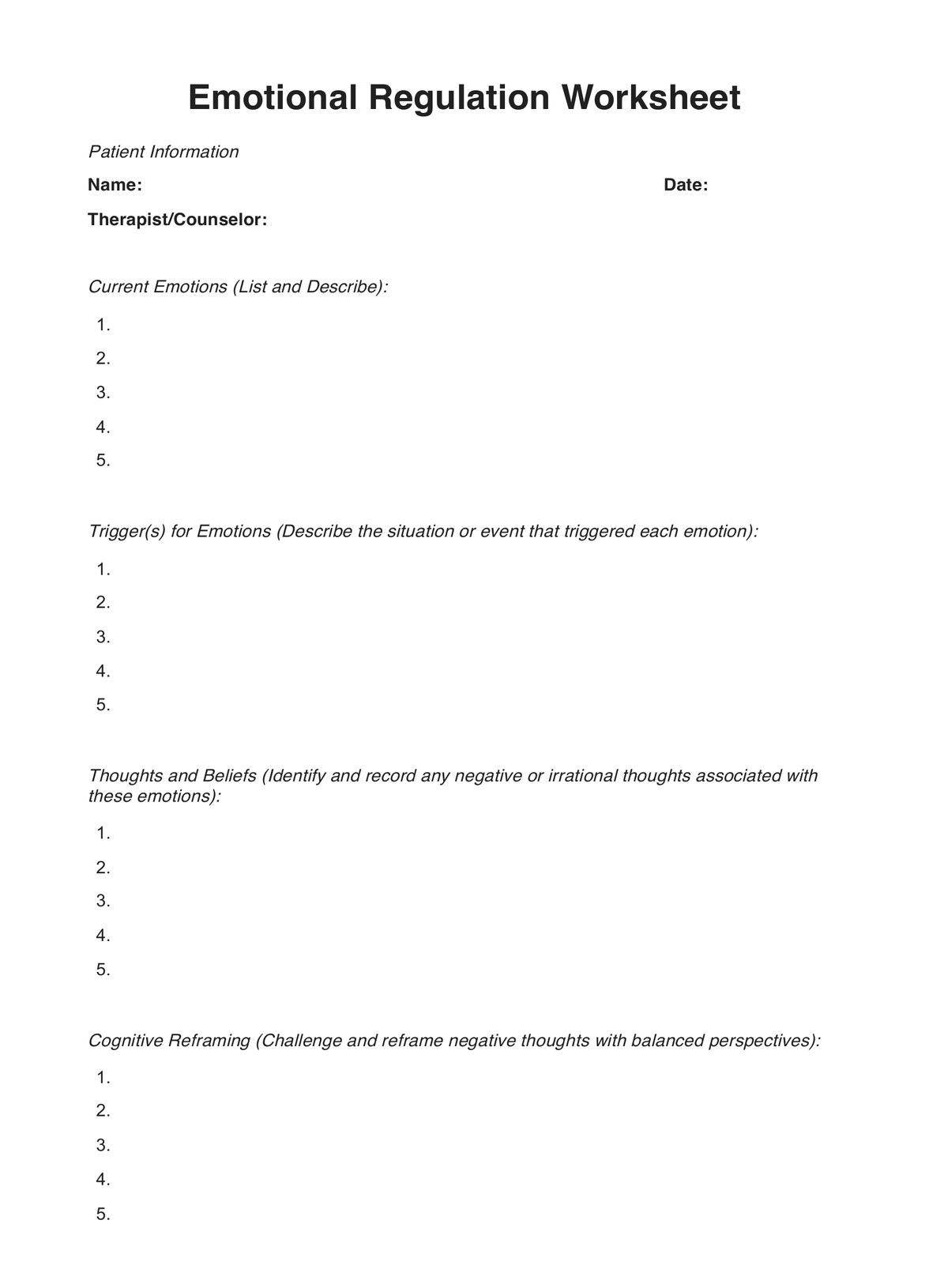Emotional Regulation Worksheets are typically used by individuals seeking to improve their emotional awareness and management skills. They are also utilized by mental health professionals, educators, and support group facilitators.

Emotional Regulation Worksheets
Enhance emotional well-being and emotional intelligence with our practical Emotional Regulation Worksheet. Manage stress, improve self-awareness, and foster emotional resilience.
Emotional Regulation Worksheets Template
Commonly asked questions
These worksheets are used when individuals want to identify, understand, and manage their emotions, especially in response to stress, anxiety, anger, or other emotional challenges. They can be used in therapy, education, self-help, and personal growth settings.
Emotional Regulation Worksheets help individuals become more aware of their emotions, manage stress and anxiety, improve communication, develop healthier coping strategies, and achieve long-term emotional well-being. They provide a structured approach to understanding and regulating emotions effectively.
EHR and practice management software
Get started for free
*No credit card required
Free
$0/usd
Unlimited clients
Telehealth
1GB of storage
Client portal text
Automated billing and online payments











